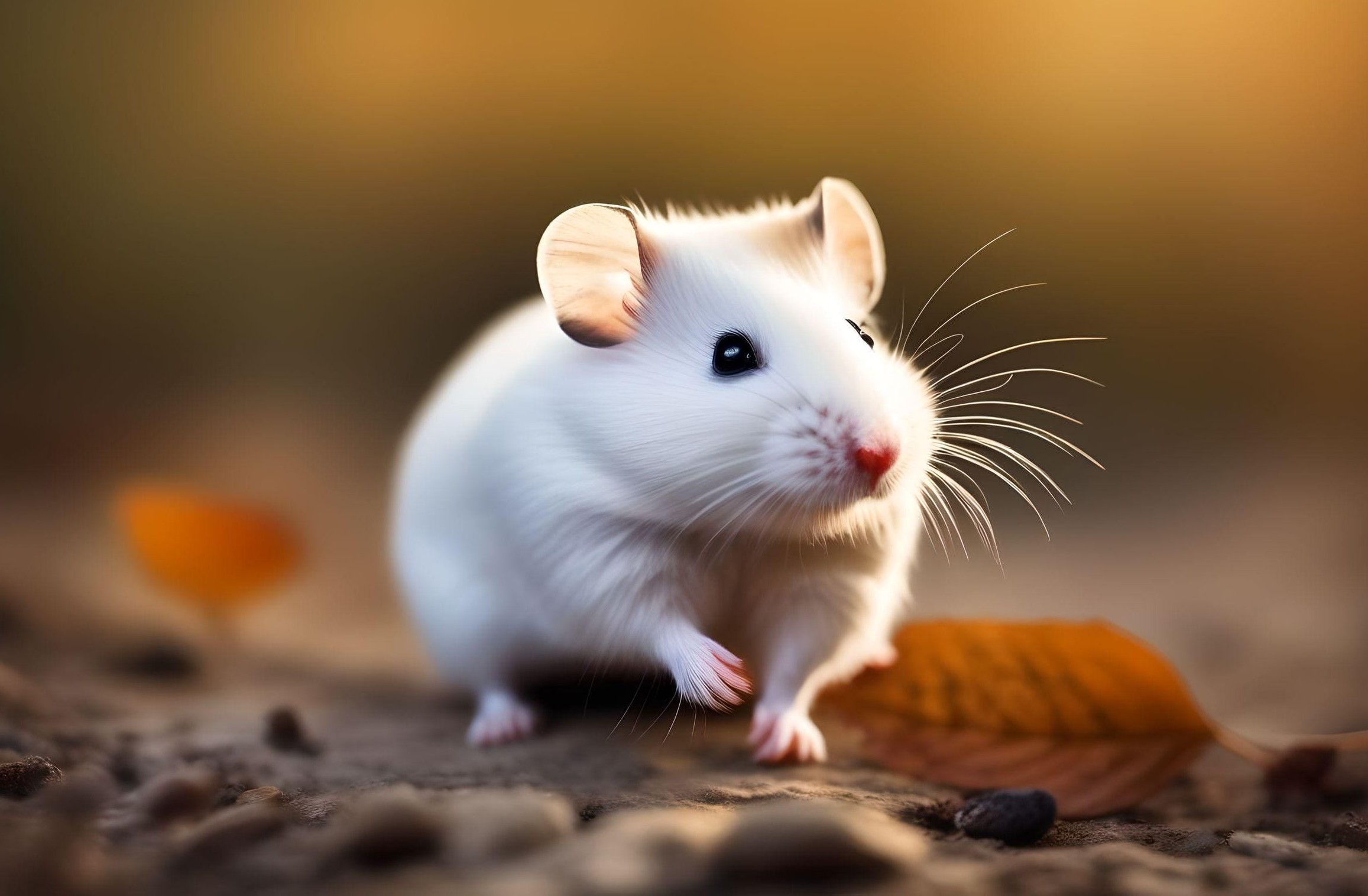Hamster Price (2023) | 6 Types, Care Tips, Food, Health, Facts, Training
Step into the enchanting world of hamsters, where tiny paws and big personalities collide. Join us on a journey to unravel the secrets of these charming pets, from breeds to care tips. Get ready to dive into the fascinating universe of hamsters and discover why they’re beloved by pet enthusiasts worldwide and Hamster Price.
Hamsters Overview
Hamsters are delightful and endearing small pets that have captured the hearts of animal lovers worldwide. With their tiny size, fluffy fur, and charming personalities, these rodents make for wonderful companions. In this comprehensive guide, we’ll explore everything you need to know about hamsters, from their various breeds to their care requirements, making an informed decision about welcoming one into your home.

1. Hamster Breeds
Hamsters come in various breeds, each with its own unique characteristics. Some of the most popular hamster breeds include:
- Syrian Hamsters: Also known as Golden Hamsters, Syrians are the largest hamster breed and are solitary creatures. They are known for their friendly nature and come in a range of coat colors.
- Dwarf Hamsters: Dwarf hamsters are smaller and more social compared to Syrians. The two most common dwarf hamster species are the Roborovski and Campbell’s dwarf hamsters.
- Chinese Hamsters: These hamsters have a unique appearance with long tails and are relatively low-maintenance pets.
2. Habitat and Housing
To ensure your hamster’s well-being, provide them with a suitable habitat. Here’s what you need to consider:

- Cage: Opt for a spacious cage with proper ventilation. Wire cages with a solid bottom are a good choice.
- Bedding: Use appropriate bedding materials like aspen shavings or paper-based bedding to keep your hamster comfortable and maintain good hygiene.
- Accessories: Include a wheel for exercise, tunnels for exploration, and a hideout for resting.
3. Diet and Nutrition
A balanced diet is crucial for your hamster’s health. Feed them a mix of:
- Hamster Pellets: These provide essential nutrients and vitamins.
- Fresh Vegetables: Offer a variety of vegetables like carrots, broccoli, and spinach.
- Fresh Fruits: In moderation, fruits like apples, bananas, and grapes can be a tasty treat.
- Clean Water: Ensure your hamster always has access to clean, fresh water.

4. Health and Hygiene
Regular health check-ups and proper hygiene are essential for your hamster’s well-being. Signs of a healthy hamster include clear eyes, a shiny coat, and an active demeanor. Be aware of common health issues such as dental problems, respiratory infections, and obesity.
5. Socialization and Interaction
While some hamster breeds are solitary, others enjoy the company of their fellow hamsters. Research your hamster’s breed to understand their social needs. Regardless of their social preferences, all hamsters benefit from daily interaction and gentle handling to build trust and prevent stress.
6. Reproduction and Breeding
Hamsters reproduce quickly, so it’s important to separate males and females to prevent unwanted litters. Breeding hamsters should only be undertaken by experienced owners with a clear understanding of the responsibilities involved.
7. Lifespan
The typical lifespan of a hamster is around 2 to 3 years, although some may live longer with proper care and genetics.
Characteristics of Hamsters
Here are common characteristics of different hamster breeds:
| Breed | Size | Social Behavior | Coat Colors | Special Traits |
|---|---|---|---|---|
| Syrian Hamsters | Largest (5-7 inches) | Solitary | Various, including golden, cinnamon, black | Friendly and personable |
| Dwarf Campbell’s Russian | Small (3-4 inches) | Social (pairs/groups) | Various | Friendly and curious |
| Dwarf Roborovski | Smallest (2 inches) | Social (pairs/groups) | Sandy brown with white spots | Exceptionally fast and agile |
| Chinese Hamsters | Average | Solitary | Brownish-gray | Long-tailed, independent disposition |
| Winter White Dwarf | Small (3-4 inches) | Social (pairs/groups) | Seasonal color change | Docile and friendly |
| Robo-Chinese Hybrid | Varies | Varies | Varies | Unique combination of parent breed traits |
Types of Hamsters
Hamsters, those tiny balls of fur and personality, are a popular choice for pet lovers. Before bringing one into your home, it’s essential to understand the different hamster breeds available and their unique characteristics. Let’s delve into the world of hamster breeds, exploring each one in detail:
1. Syrian Hamsters (Mesocricetus auratus):
Syrian hamsters, often called Golden Hamsters, are the largest of all hamster breeds. These solitary creatures prefer a life of solitude and do not typically get along with other hamsters. Known for their friendly and personable nature, Syrian hamsters come in a wide range of coat colors, including golden, cinnamon, and black. Their large size and striking appearance make them a popular choice for many hamster enthusiasts.

- Size: Syrians are the largest of all hamster breeds, typically reaching 5 to 7 inches in length.
- Behavior: They are solitary creatures and prefer to live alone. Attempts to house them with other hamsters often result in fights.
- Appearance: Syrian hamsters come in a wide range of coat colors, including golden, cinnamon, black, and more.
2. Dwarf Campbell’s Russian Hamsters (Phodopus campbelli):
If you’re looking for a more social hamster, consider the Dwarf Campbell’s Russian Hamster. These hamsters are relatively small, usually measuring around 3 to 4 inches in length. Unlike their solitary Syrian counterparts, Campbell’s Russian hamsters are more amiable and can often be kept in pairs or small groups if introduced correctly. They are known for their friendly and curious nature, making them a delightful addition to any family.
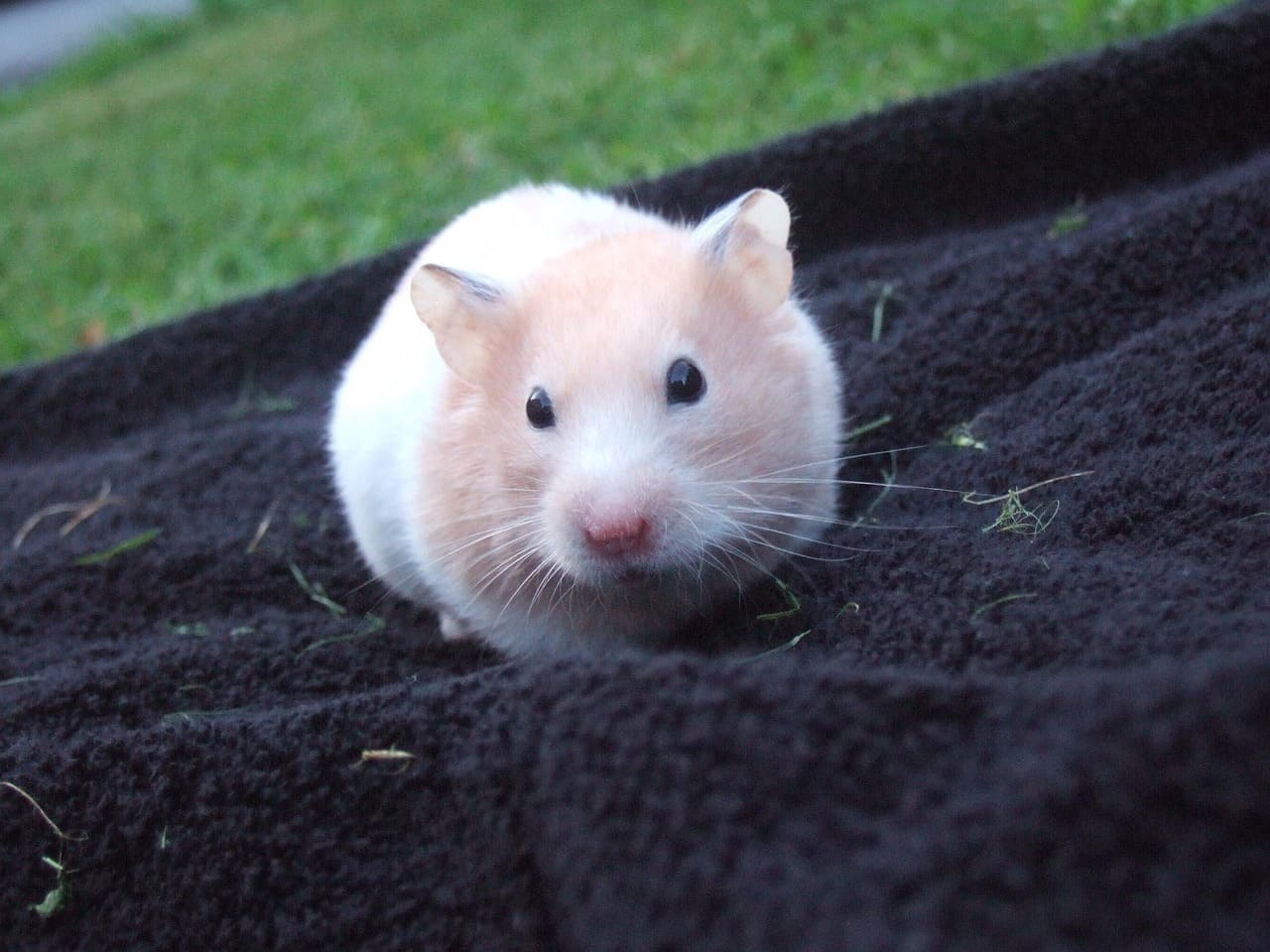
- Size: These hamsters are relatively small, usually measuring around 3 to 4 inches in length.
- Behavior: Campbell’s Russian hamsters are more social and can often be kept in pairs or small groups if introduced properly.
- Temperament: They are known for their friendly and curious nature.
3. Dwarf Roborovski Hamsters (Phodopus roborovskii):
For those who appreciate the tiniest of companions, the Dwarf Roborovski Hamster fits the bill. These hamsters are exceptionally small, typically measuring around 2 inches in length. Their petite size, along with their remarkable speed and agility, make them a unique choice. While they are social animals, it’s best to keep them together in pairs or small groups to ensure their well-being and happiness.

- Size: Roborovski hamsters are the smallest of all hamster breeds, typically measuring around 2 inches in length.
- Behavior: They are exceptionally fast and agile, making them challenging to handle.
- Socialization: While they are social animals, they should be kept together in pairs or small groups.
4. Chinese Hamsters (Cricetulus griseus):
Chinese hamsters stand out in the hamster world due to their long tails, setting them apart from other breeds. They have specific habitat preferences, enjoying burrowing and tunneling activities. However, Chinese hamsters are more solitary by nature and may not always tolerate the presence of cage-mates. If you’re seeking a hamster with a distinctive appearance and independent disposition, Chinese hamsters might be the right choice.
- Appearance: Chinese hamsters are easily recognizable by their long tails, which set them apart from other hamster breeds.
- Habitat Preferences: They enjoy burrowing and tunneling and have specific habitat requirements.
- Social Behavior: Chinese hamsters are more solitary and may not always tolerate cage-mates.
5. Winter White Dwarf Hamsters (Phodopus sungorus):
Winter White Dwarf Hamsters are known for their unique ability to change the color of their fur seasonally. In winter, they sport a white coat, while in summer, it transitions to a brownish-gray hue. These dwarf hamsters are generally social and can live in pairs or small groups. They have a docile and friendly disposition, making them a popular choice for those who want a more interactive pet.
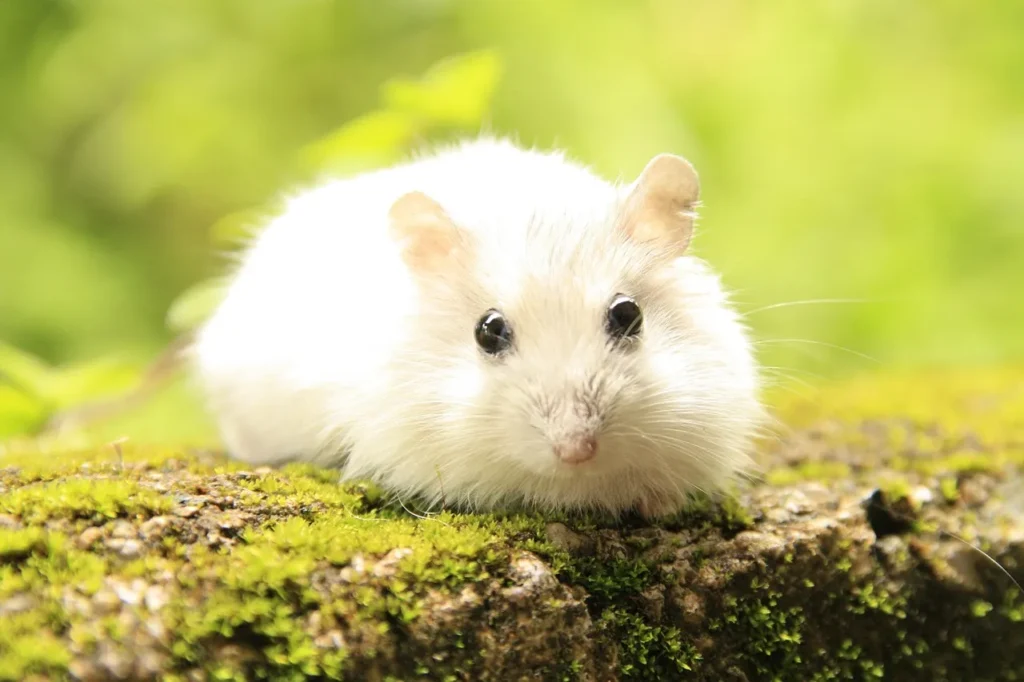
- Appearance: These dwarf hamsters are known for their ability to change the color of their fur seasonally.
- Social Nature: Winter White hamsters are generally social and can live in pairs or small groups.
- Behavior: They have a docile and friendly disposition.
6. Robo-Chinese Hybrid Hamsters:
Occasionally, breeders cross Roborovski and Chinese hamsters, resulting in hybrid hamsters. These hybrids may exhibit a combination of traits from both parent breeds, making them intriguing and unique pets. However, it’s essential to research their care requirements carefully, as they may differ from those of purebred hamsters.

- Origin: Some breeders have crossed Roborovski and Chinese hamsters, creating hybrid hamsters.
- Traits: These hybrids may display a combination of characteristics from both parent breeds.
- Care Requirements: The care requirements for hybrid hamsters may vary, so thorough research is essential.
History of Hamsters
Hamsters were first discovered in the Syrian desert at the end of the 18th century. In the early 1900s, British zoologist George Robert Waterhouse brought a group of hamsters back to the UK for research. From there, the hamster became a popular pet in Europe and later the United States.
The first hamster pet was owned by Albert Marsh, a zoologist, who kept a Syrian hamster as a research animal in the 1930s. It wasn’t until the 1940s that hamsters became widely available as pets. In 1949, the first domesticated hamster was imported to the United States from Syria.
The first hamsters kept as pets were Syrian hamsters, also known as golden hamsters. They were easy to raise and care for, and their small size made them ideal pets for children. As the hamster grew in popularity, other breeds were developed, including dwarf hamsters and Chinese hamsters.

Hamsters are popular pets around the world today, and there are many different breeds and colours to choose from. They are known for their small size, low maintenance and sweet and playful personalities.
Behaviour and Temperament of Hamsters
Hamsters have different habits and temperaments that vary according to breed, age, and individual personality. Here are some general hamster characteristics:
- Nocturnal: Hamsters are nocturnal animals, which means they are most active at night and may sleep during the day. This might make them less interactive during the day.
- Solitary: Most hamsters prefer to live alone and can become territorial if kept with other hamsters. Some dwarf hamster species can live in the same pairs.
- Hamsters are active animals that require space to run, climb, and explore. They also love having toys and activities in their cages.
- Natural explorers, hamsters are naturally curious creatures who love to explore their surroundings. They may occasionally attempt to break out from their cages as a result of this.
- Fearful: Loud noises and quick movements can easily frighten hamsters. They may become aggressive or even bite to protect themselves if this occurs.
- Animals that can be social, hamsters frequently take pleasure in connecting with their owners. However, it’s crucial to treat them gently and avoid overstimulating them.
Appearance of Hamsters
Small, round hamsters have short legs, a short, fluffy tail, and a body that is rectangular in shape. They have large, black eyes with beady eyes and rounded, hairy ears. Depending on the breed, their hair can be either short or long, and it can have a variety of colours and patterns, including golden, white, grey, brown, black, and even spotted or striped.
While dwarf hamsters are smaller and often only reach lengths of 2 to 4 inches, Syrian hamsters are larger than other breeds and can reach lengths of up to 6-7 inches. While certain kinds of hamsters, like the Teddy bear hamster, have long, fluffy coats, others, like the Chinese hamster, have longer tails.

One of the reasons hamsters are such well-liked pets is that they frequently have a cute and cuddly appearance. The fact that they are living things with unique personalities and wants and should be treated with care and respect should be kept in mind.
Hamster Price
In the USA, the price of a pet hamster typically ranges from $5 to $20, depending on the breed and whether it’s obtained from a breeder or a pet store. In India, the cost of a pet hamster is around 200 to 600 Indian Rupees, with variations based on the region and the hamster’s type.
Hamster Price in India
The price of a hamster in India can vary depending on factors such as the breed, age, and location of purchase. On average, you can expect to pay between 200 to 600 Indian Rupees for a hamster as a pet. Syrian hamsters are often on the higher end of this price range, while dwarf hamsters may be more affordable.
Hamster Pet Price
The price of a pet hamster in India can vary based on factors such as the breed, age, and where you purchase it. On average, you can expect to spend around 200 to 600 Indian Rupees for a pet hamster.
Hamster Price In Delhi
In the bustling city of Delhi, hamsters are available at prices ranging from 250 to 700 INR, with Syrian hamsters typically being on the higher end due to their popularity and size. Dwarf hamsters like Campbell’s or Winter White can often be found in the lower range of 250 to 400 INR.
Hamster Price In Kolkata
Kolkata offers a range of hamster prices, with costs typically falling between 200 and 600 INR. The pricing is similar to the national average, allowing for budget-friendly options for pet enthusiasts in the city.
Hamster Price In Kerala
In Kerala, hamster prices usually range from 220 to 550 INR. This pricing provides an affordable option for those looking to bring these charming pets into their homes. These Prices are based on several factors such as breeder reputation, types, colour, and location.
Hamster Price In Bangalore
Bangalore’s pet-friendly culture offers hamsters at prices typically ranging from 300 to 800 INR. Syrian hamsters may be on the higher end, while dwarf hamsters can be found at the lower end of this price range.
Hamster Price In Chennai
In Chennai, hamster prices generally fall within the 250 to 700 INR range. This pricing allows residents to choose from various breeds and find a hamster that suits their budget. These Prices are based on several factors such as breeder reputation, types, colour, and location.
Hamster Price In Mumbai
The bustling city of Mumbai provides hamsters in a price range of approximately 300 to 750 INR. The range accommodates different preferences and budget considerations among pet lovers.
Hamster Price In Jaipur
In Jaipur, hamster prices typically range from 230 to 600 INR. These prices make hamsters an attractive option for those seeking a furry companion in the Pink City. These Prices are based on several factors such as breeder reputation, types, colour, and location.
Hamster Price In Pune
Pune’s diverse pet community offers hamsters within the 280 to 650 INR range. This range provides flexibility for residents in selecting their preferred hamster breed. These Prices are based on several factors such as breeder reputation, types, colour, and location.
Hamster Price In Hyderabad
Hyderabad typically provides hamsters at prices ranging from 270 to 700 INR. This range ensures accessibility to these adorable pets for residents in the city. These Prices are based on several factors such as breeder reputation, types, colour, and location.
Hamster Price In Indore
In Indore, you can usually find hamsters priced in the range of 240 to 620 INR, making them an affordable choice for pet enthusiasts in the region. These Prices are based on several factors such as breeder reputation, types, colour, and location.
Hamster Price In Nagpur
In Nagpur, hamster prices are generally within the 260 to 680 INR range. This range caters to a variety of preferences and budgets among potential hamster owners. These Prices are based on several factors such as breeder reputation, types, colour, and location.
Hamster Price In Chandigarh
Chandigarh typically offers hamsters at prices ranging from 220 to 600 INR. This affordability ensures that residents can consider hamsters as delightful and budget-friendly pets. These Prices are based on several factors such as breeder reputation, types, colour, and location.
Hamster Price In Lucknow
In Lucknow, hamster prices typically range from 230 to 650 INR. These prices make hamsters accessible and appealing to pet lovers in the city. These Prices are based on several factors such as breeder reputation, types, colour, and location.
Hamster Price In Dehradun
Dehradun provides hamsters at prices within the 250 to 700 INR range, making them an affordable option for those looking to welcome these small companions into their homes. These Prices are based on several factors such as breeder reputation, types, colour, and location.
Hamster Price In Guwahati
In Guwahati, you can typically find hamsters priced in the range of 210 to 580 INR, providing budget-friendly choices for pet enthusiasts in the region. These Prices are based on several factors such as breeder reputation, types, colour, and location.
Syrian Hamster Price
The price of a Syrian hamster, also known as a Golden Hamster, can vary depending on several factors such as its age, coloration, and the source from which you acquire it. On average, you can expect to pay between 300 to 800 Indian Rupees for a Syrian hamster in India.
White Hamster Price
The price of a white hamster in India typically falls within the same range as other hamster breeds, ranging from 200 to 600 INR. These prices make white hamsters an attractive choice for their striking appearance.
Golden Hamster Price In India
Golden hamsters in India are generally priced between 250 and 700 INR, depending on factors such as age and source. Their friendly nature and distinctive coat color make them a popular choice among hamster enthusiasts.
Dwarf Hamster Price In India
Dwarf hamsters, including Campbell’s, Winter White, and Roborovski, typically fall within the 220 to 580 INR price range in India. These small and social hamsters are known for their charming personalities.
Roborovski Dwarf Hamster Price In India
Roborovski dwarf hamsters in India are usually priced similarly to other dwarf hamsters, ranging from 240 to 620 INR. Their tiny size and agility make them a sought-after choice among pet owners.
Hamster Cage Price
The price of a hamster cage can vary widely based on its size, design, and features. Basic cages may start at around 30 USD to 40 USD, while larger, more elaborate enclosures with accessories can cost several thousand USD.
Hamster Cage Price In India
In India, hamster cage prices can range from 500 INR for simpler and smaller cages to several thousand INR for larger, feature-rich enclosures. The price depends on factors such as cage size, material, and included accessories, allowing pet owners to choose based on their budget and preferences.
Hamster Prices In Different Locations in India
Here are different Hamster Pets Price In Different Locations in India with different Types:
| Hamster Pet Price List India | |
|---|---|
| Different Locations | Hamster Prices |
| Hamster Price in Delhi | ₹500 to ₹5,500 |
| Hamster Price in Kolkata | ₹550 to ₹4,000 |
| Hamster Price in Kerala | ₹600 to ₹6,000 |
| Hamster Price in Bangalore | ₹450 to ₹4,000 |
| Hamster Price in Chennai | ₹500 to ₹5,000 |
| Hamster Price in Mumbai | ₹600 to ₹5,000 |
| Hamster Price in Pune | ₹500 to ₹4,000 |
| Hamster Price in Jaipur | ₹400 to ₹5,000 |
| Hamster Price in Hyderabad | ₹500 to ₹4,000 |
| Hamster Price in Nagpur | ₹300 to ₹4,500 |
| Hamster Price in Guwahati | ₹700 to ₹6,000 |
| Hamster Price in Indore | ₹500 to ₹4,000 |
| Hamster Price in Kochi | ₹600 to ₹5,000 |
| Hamster Price in Lucknow | ₹450 to ₹5,500 |
| Hamster Price in Tamilnadu | ₹650 to ₹4,000 |
| Hamster Price in Chandigarh | ₹560 to ₹5,500 |
| Hamster Price in Ahmedabad | ₹420 to ₹3,800 |
| Hamster Baby Price in India | ₹350 to ₹3,200 |
| Hamster Cage Price in India | ₹590 to ₹1,500 |
| Hamster Price in Coimbatore | ₹500 to ₹5,600 |
| Secugen Hamster Pro 20 Price | ₹700 to ₹5,500 |
| Syrian Hamster Price in India | ₹800 to ₹7,000 |
| Dwarf Hamster Price in India | ₹600 to ₹5,000 |
| Golden Hamster Price in India | ₹700 to ₹7,200 |
| Roborovski Dwarf Hamster Price in India | ₹800 to ₹7,500 |
| White Hamster Price in India | ₹500 to ₹6,000 |
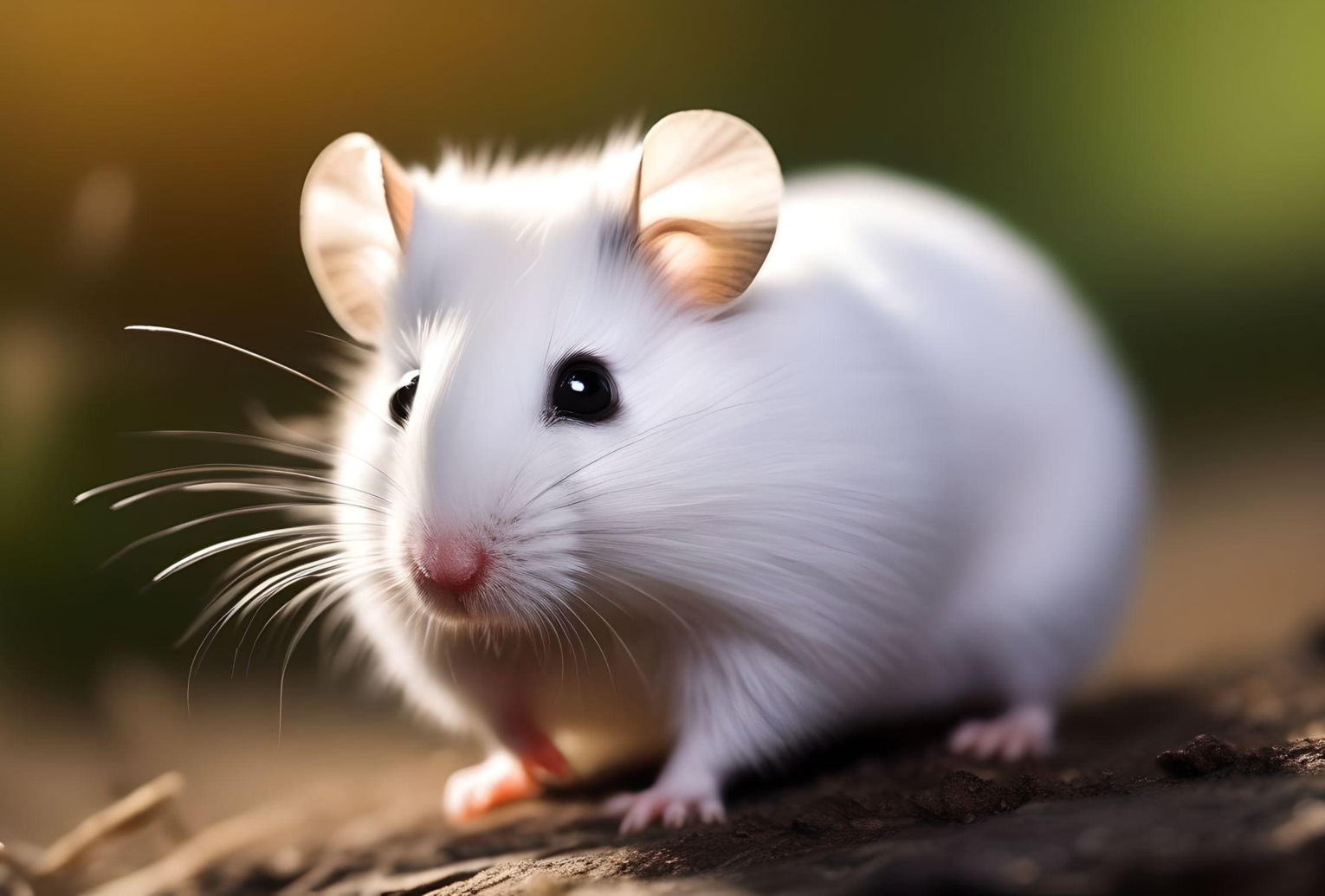
Various Factors that Affect the Price of Hamsters
Hamster prices can be affected by a number of factors, including:
- Breeds and rarity: Some hamster breeds are more popular or rarer than others, which can lead to higher prices.
- Age and Gender: Young hamsters and females tend to be more expensive than older hamsters and males.
- Coat Colors and Patterns: Certain colours and patterns may be preferred over others, and may result in price differences.
- Breeder or Pet Store: Prices vary depending on where you buy your hamster. Reputable breeders usually charge more than pet stores.
- Geographic Location: Prices may vary depending on the region or city in which the hamster is sold.
- Supply and Demand: High demand for hamsters and low supply can drive prices up.
- Market Trends: Prices may fluctuate due to seasonal trends such as Increased demand during the holiday season or the start of school.
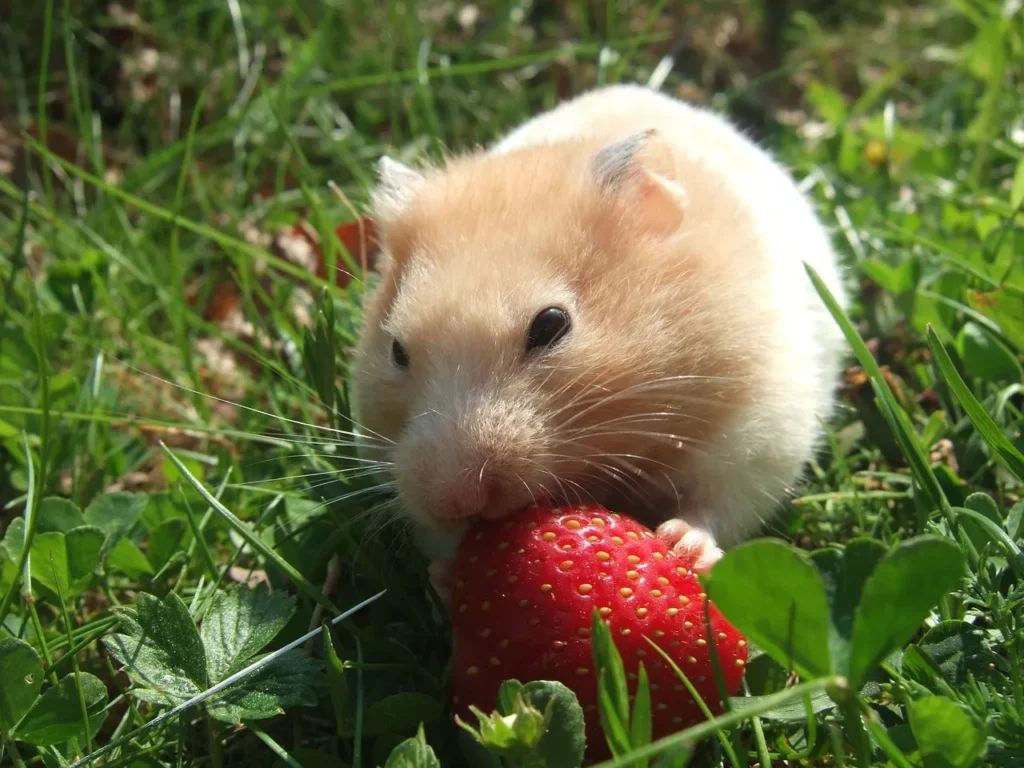
Facts About Hamsters
Here are some interesting facts about hamsters:
- Hamsters have cheek pouches that allow them to carry and store food.
- Hamsters are nocturnal animals, which means they are most active at night.
- Natural burrowers, hamsters may dig intricate subterranean tunnels and chambers.
- Hamsters are quick runners, capable of running up to 6 kilometres every night in the wild.
- Some hamsters, like the Syrian hamster, may be kept as lonely pets, whilst others, like dwarf hamsters, prefer to live in groups.
- Hamsters have limited eyesight and must navigate their environment using their senses of smell and hearing.
- Because hamsters’ teeth never stop growing, they must continually gnaw on items to wear them down.
- There are over 25 species of hamsters, with the most common pet species being the Syrian hamster, dwarf hamster, and Roborovski hamster.
- Hamsters have been used in scientific research to study topics such as circadian rhythms and genetics.
- The name “hamster” comes from the German word “hamstern,” which means “to hoard.” This refers to the hamster’s habit of storing food in their cheek pouches and burrows.

Pros and Cons of Hamsters as Pets
Some common pros and cons of keeping hamsters as pets:
| Pros of Hamsters as Pets | Cons of Hamsters as Pets |
|---|---|
| 1. Compact Size: Hamsters are small and require minimal space, making them ideal for apartments and small homes. | 1. Nocturnal Behavior: Hamsters are nocturnal, which means they are active at night and may disturb your sleep if their cage is in your bedroom. |
| 2. Low Cost: Hamsters are relatively inexpensive to acquire and care for compared to larger pets. | 2. Short Lifespan: Hamsters have a relatively short lifespan, typically living 2 to 3 years, which can be a source of sadness for owners. |
| 3. Low Maintenance: They are low-maintenance pets, requiring simple care routines, including feeding, cleaning, and providing fresh water. | 3. Solitary Nature: Syrian hamsters are solitary animals and may not enjoy the company of other hamsters, requiring individual cages. |
| 4. Entertaining to Watch: Hamsters are active and curious, providing entertainment through their burrowing, running on exercise wheels, and exploring their environment. | 4. Fragile: Hamsters are delicate animals, and handling them roughly can lead to injury. Children should be supervised when interacting with them. |
| 5. Minimal Grooming: Hamsters are self-groomers, so you don’t need to bathe them. | 5. Short-Tempered: Some hamsters can be territorial and may bite if they feel threatened or startled. |

Hamsters Training Guide
Hamsters may not be as responsive to teaching as some other pets, but with patience and regular instruction, they may still pick up simple skills and tricks. The following advice will help you teach your hamster:
- Before to trying to teach your hamster certain actions, it is essential to establish their comfort with you and their environment. To assist establish trust, spend time nearby their cage, offer them food, and speak to them softly.
- Use incentives and praise to teach your hamsters to act properly. Hamsters respond strongly to incentives and praise. Avoid punishing or scaring your hamster because doing so could make them afraid or aggressive.
- Sessions must only be for few minutes at a time because hamsters have short attention spans. They won’t get frustrated or bored as a result of this.
- Teach basic habits: Begin by teaching your hamster basic actions like sitting on your hand or moving to the front of their cage. Use a reliable cue, such a verbal or hand signal, and treat them when they exhibit the desired behaviour.
- Hamsters can be slow to acquire new habits, so have patience and try not to become irritated if they don’t get anything right away.
Care Tips for Hamster Pets
Caring for a hamster involves providing them with a healthy and safe environment, as well as meeting their basic needs. Here are some care tips for hamster pets:
- Provide a suitable habitat: Hamsters need a cage that is large enough for them to run and play, with enough space for a hideaway, exercise wheel, and chew toys. The cage should be cleaned regularly to maintain a healthy living environment.
- Offer a nutritious diet: Hamsters require a diet that is high in protein and fibre and low in fat. Commercial hamster food is readily available, but fresh fruits and vegetables can also be offered in small amounts.
- Provide fresh water: Hamsters require fresh, clean water at all times. A water bottle is recommended over a bowl to prevent spillage and contamination.
- Keep the environment comfortable: Hamsters are sensitive to temperature changes and should be kept in a room that is between 60-80°F. They also need bedding that is safe and comfortable for them, such as aspen shavings or paper-based products.
- Allow for exercise and interaction: Hamsters need opportunities for exercise outside of their cages, such as playtime in a secure area or a hamster ball. They also benefit from social interaction with their owners, such as gentle handling and playtime.
- Monitor for health issues: Hamsters are prone to certain health issues, such as dental problems and respiratory infections. Regular veterinary checkups can help ensure their health and well-being.
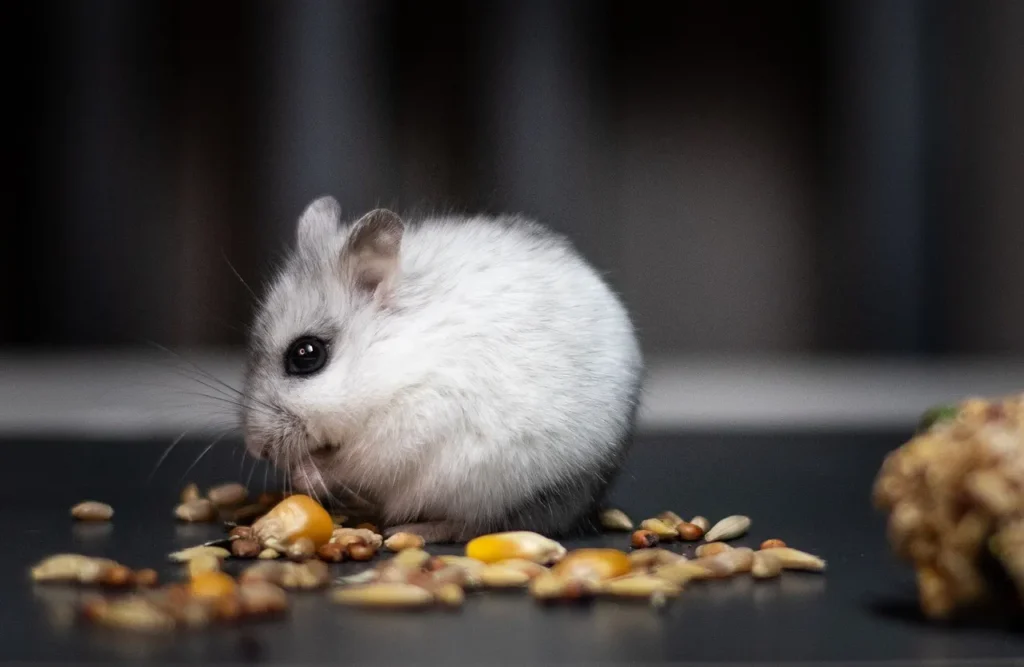
Health Issues of Hamsters
Hamsters can be prone to a variety of health problems, some of which may require veterinary attention. Here are some common health problems that can affect hamsters:
- Dental problems: Hamsters have constantly growing teeth that require wear and tear from chewing. If the teeth grow too much or are misaligned, it can cause pain and difficulty eating.
- Respiratory infections: Hamsters can develop respiratory infections, which can cause symptoms such as sneezing, coughing and difficulty breathing.
- Wet tail: Wet tail is a bacterial infection that can affect a hamster’s digestive tract and cause symptoms such as diarrhoea, lethargy and loss of appetite.
- Skin Problems: Hamsters can develop skin problems such as mites or fungal infections that can cause hair loss, scabies and itching.
- Tumours: Hamsters can develop tumours, especially in their mammary glands, which may require surgical removal.
- Obesity: Hamsters can become overweight if they are fed too much or don’t get enough exercise, which can lead to health problems like diabetes.
The lifespan of Hamster Pet
A pet hamster’s lifespan can vary based on the species and the animal’s health, although most hamsters survive for 2 to 3 years on average. While some types, like the Roborovski dwarf hamster, have a lifespan of up to 4 years, others, like the Chinese hamster, have lifespans of just 1 to 2 years.
Hamster Pet Video
Conclusion:
Hamsters are little, charming, and favoured pets. Since they are rodents, people often associate them with charming, fluffy appearances and active personalities. They are extremely simple to care for, making them excellent pets for households and people seeking low-maintenance pets. There are various different species of hamsters, and each has individual traits and temperaments. They are lively animals who require a lot of exercises, so it’s crucial to give them toys, a large cage, and opportunities to play. All things considered, hamsters may make fantastic pets for people who are prepared to put the time and effort into caring for them correctly.
Frequently Asked Questions on Hamsters:
-
what is the price of a hamster in India?
The price of a hamster in India starts from ₹500 and goes up to ₹4,800.
-
How Much Does a Hamster Cost?
The Cost of a Hamster is between ₹500 to ₹4,800.
-
How Much is a Hamster?
The price of a hamster can vary based on several factors such as breed, age and location. On average, a hamster can cost between $10 and $30 at a pet store, although some special breeds or rare hamsters can cost more.
-
Where Do Hamsters Live In the Wild?
The Middle East, Asia, and portions of Europe are home to hamsters, which are native to semi-arid environments including steppes, deserts, and grasslands. They frequently create underground shelters called burrows where they spend the colder months hibernating.
-
How Long Does a Hamster Live?
The lifespan of a hamster depends on its species and size. On average, hamsters live between 2 and 3 years, but some may live up to 4 years or more in captivity with proper care.
-
Can a Hamster Eat Apples?
Yes, hamsters can eat apples. Apples are a safe and healthy treat for hamsters in moderation, as they are a good source of vitamins and fiber.
-
How Long Does a Syrian Hamster Live?
On average, Syrian hamsters (also known as golden hamsters) live between 2 and 3 years in captivity with proper care. However, some Syrian hamsters may live up to 4 years or more.
-
A Hamster’s Habitat?
A hamster’s habitat should include a cage with solid flooring, soft bedding, a nesting area, a running wheel, and toys, as well as a balanced diet and fresh water.
-
Can a Hamster Eat Celery?
Yes, hamsters can eat celery. Celery is safe for hamsters to eat and can be a healthy addition to their diet.
-
Can a Hamster Eat Lettuce?
Yes, hamsters can eat lettuce. Lettuce is safe for hamsters to eat and can be a healthy addition to their diet.
-
How Long Does a Hamster Hibernate?
Hamsters do not hibernate. They are not true hibernators and remain active throughout the year, although they may be less active during the winter months.
-
How Much is a Hamster at Petco?
Petco hamster price may vary based on hamster location and availability. Petco hamsters can average between $10 and $20, but rarer breeds or special colors can cost more. It’s best to check with your local Petco store or their website for pricing information.
-
Where to Buy a Hamster?
You can buy a hamster from pet stores, breeders, or animal shelters. It’s important to do your research and choose a reputable seller that offers healthy and well-cared-for hamsters.
-
Can a Hamster Eat Watermelon?
Yes, hamsters can eat watermelon. Watermelon is safe for hamsters to eat and can be a healthy treat in moderation. However, like all fruits, watermelon should be given to hamsters in small amounts due to its high sugar content.
-
Can Hamster See In the Dark?
Yes, hamsters have very good night vision and can see in the dark. They have large eyes and pupils that allow them to see well in low light, which is adapted to their natural habitat where they are most active at night.
-
Can you Give a Hamster a Bath?
Giving a hamster a bath in water is typically not advised since hamsters do not do well in water and are susceptible to becoming frightened or anxious. A dry shampoo made especially for tiny animals may be purchased at pet stores to clean a hamster’s fur if it becomes greasy or soiled.
-
How to Care for a Hamster?
Provide a large and secure cage with soft bedding, a nesting area, a running wheel, toys, a balanced diet, fresh water, and regular veterinary check-ups.
-
Why is My Hamster Squeaking?
Hamsters may squeak for a variety of reasons, including communication, stress, pain, or excitement.
-
Can a Hamster Eat Peanut Butter?
Yes, hamsters can eat peanut butter, but it should be given in very small amounts as an occasional treat due to its high-fat content. It’s important to choose all-natural peanut butter with no added sugars or salt.
-
Can Guinea Pigs Eat Hamster Food?
Guinea pigs can eat hamster food in an emergency, but it is not recommended as their nutritional requirements are different.
-
Can a Hamster Eat a Strawberry?
Yes, hamsters can eat strawberries. Strawberries are safe for hamsters to eat and can be a healthy treat in moderation.
-
Can a Hamster Eat Popcorn?
It is not recommended to feed hamsters popcorn. While plain, air-popped popcorn is not toxic to hamsters, it has little nutritional value and can pose a choking hazard. Hamsters may also be attracted to the salt and butter often added to popcorn, which can be harmful to their health.
-
How Long can a Hamster Go Without Waterweeks?
Hamsters should not go without water for more than 24 hours as they can become dehydrated and develop serious health problems. It’s important to provide your hamster with fresh water every day.
Related Topics:

























